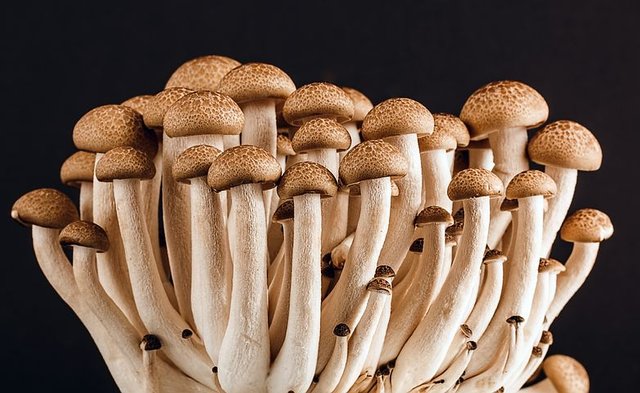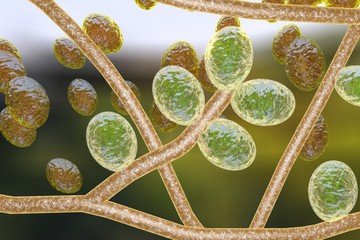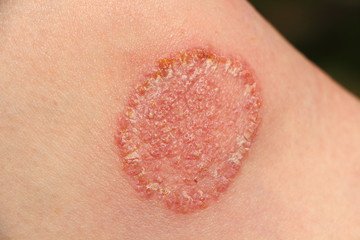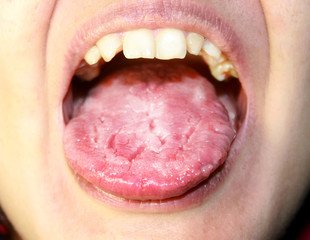A CRITICAL LOOK INTO THE MYCOTIC WORLD ; SYSTEMIC MYCOSES ON SPOTLIGHT AND ANTIFUNGAL DRUGS ACTION.
Hello steemians, how are you all doing ? hope you guys are good and doing fine. I am doing just fine except that the stress in school have not given me the opportunity to explore steemit. It is a privilege to share some knowledge with you. I would passionately implore you to read till the end because there is a lot in stock . Oh lest I forget I was working at MYCOLOGY BENCH and it was here I got to know of these disease condition called MYCOSES.
Mycology simply means the study of fungi of medical importance. A bench is a section or part of a laboratory that a particular test or daignoses is done or carried out. Now the next question that might be poping out of your head will be what exactly causes these diseases ..... I present to you the world of fungi, they are responsible for causing mycotic infections.
WHAT ARE FUNGI.....
Fungi are a group of microorganisms that are eukaryotic in nature (they have well organised nucleus),they are saprobic(feed on dead decaying matter, initially the word SAPROPHYTES was used but due to scientific discovery they are no longer used because it depicts or present fungi as plants). And are parasitic(feed on their host for growth and survival)in nature and non-photosynthetic(lack chlorophyl),they possess cell wall called CHITIN(made up of N-acetyl glucosamine) also seen in exoskeleton of insects.
its cell membrane are madeup of ergosterol unlike that of bacteria and animal cells that are made up of cholesterol and it will interest you to know that the pharmacodynamic effects(mode of action) of antifugal agents or drugs mostly involve the inhibition of fungal cell membrane and wall, well just dont get confuse we will still discuss how to treat mycotic infection so just be patient.
Do you know how they feed, as saprobic and parasitic organisms ? Well fungi are able to secrete extracellular enzymes to solublise or dissolve their food before they are diffuse into their body(saprobic),as parasite they make use of their host cell nucleus to synthesize their needs and also secretes TOXINS that destroy the cells or tissue.
Are you aware that fungi exist in two(2)forms...well they do exist as yeast(unicellular) and moulds(multicellular) and these moulds have tube like structures called HYPHAE and when they intertwine or cross each other are called MYCELIA. A clony of fungi is called THALLUS and fungi reproduce both asexually and sexually though some species are called FUNGI IMPERFECTI i.e they undergo neither of these sexual phase.
Fungi usually exist as yeast in the body and as moulds extracellularly, yet some fungi exist as DIMORPHIC fungi meaning that some fungi exist as yeast and moulds during their lifespan. this is one of the reason why fungi are pathogenic(can cause disease) and this is as a result of change in temperature and nutrients. Wait a minute ! though fungi can cause diseases,it is only a handful of them as majority of them are BENEFICIAL to man.
Most of us eat mushrooms though few species are toxic, fungi are also used in bakery(bread)and brewery industry(alcohol)( saccharomyces cerevisiae and s.carlsbergensis respectively) and penicillin is used for producing antibiotics.
Now lets get to the business of the day,permit me to take you into the mycotic world. sit and pay attention as we parouse these pathological guys to help us know and evade them and live a healthy life for a maxim says "an enemy you dont know could be a friend"... permit me to educate you on these common enemy.
MYCOSES ;A STUBBORN FELLOW
As i said earlier fungi reproduces asexually by this i mean they are able to divide and produce SPORES that are ubiquitous(everywhere)and airborne. Have you wonder why whenever you leave your meals uncovered till the next day and when you come back to consume them you meet unwelcome and unwanted friends and you be like HOW COME...?
Also have you noticed that most times breads that have stayed for long tend to develop moulds on them, these are fungi in action. some of us sometimes still go ahead and decide to chop off the affected part of the bread or decide to warm the meal and still consume it. Dear friends let me inform you ,you are indeed sowing and depositing fungi in your body that would later develop into mycoses(systemic).
what is mycoses.....
Mycoses simply refers to infections caused by fungi. mycotic infections are very stubborn because they are difficult to treat or cure, their treatment usually last for several weeks to months and sometimes not even cured till the patient dies.
mycotic infections are many, they range from the ones we know such as ringworms to others we dont such as histoplasmosis e.t.c. These mycotic infections are classified based on the layers or depth of tissues they affect, they are;
*superficial mycoses: these affects the outermost appendages of the skin. they include ; tinea versicolor(wrongly called eczema),piedra and tinea nigra.
*cutaneous mycoses: simply called dermatophytes casually called ringworms. this type of mycotic infections has to do with keratinized tissues of the body e.g hair,skin,nails etc.
*subcutaneous mycoses: they are mycotic infections found at subcutaneous or cutaneous tissue,infections are localized e.g mycetoma.
*systemic mycoses: this type of mycotic infection has to do with infection of internal organs of the body.they usually get into the body through the lungs e.g Histoplasmosis e.t.c
SYSTEMIC MYCOSES ON SPOTLIGHT
Now for this article i will be focusing on systemic mycoses and in my subsequent post, i will talk about other types of mycoses. I decided to discuss this type of mycotic infections because they are usually ASYMPTOMATIC(they lack clinical symptoms) they generally have symptoms like pyrexia(fever),cough and pain which are non-specific symptoms of these infections. it is unfortunate that it can only be specifically detected or daignose through fungal study(laboratory tests).
As i explained earlier systemic mycoses are mycotic infections that affect internal organs of the body,resulting to destruction of the affected organ and enventual death of the patient if not treated. how do they get into the body?....most times it is through the LUNGS but they also gets through skin cuts, paranasal sinuses and gastrointestinal tract (gut).
Interestingly systemic mycoses are further classified into two(2) based on the nature of the fungi affecting the patient,they include;systemic mycoses due to pathogenic fungi and systemic mycoses due to opportunistic fungi. they are usually DIMORPHIC fungi that is why they can cause these infections.
*systemic mycoses due to pathogenic fungi;these are category of mycotic infections caused by true pathogenic fungi e.g Histoplasmosis,Blastomycosis,coccidioidomycosis and paracoccidioidomycosis e.t.c.
*systemic mycoses due to opportunistic fungi; first of all, what are opportunistic fungi? these are fungi that are that are nturally harmless but can cause infections on patients with suppressed or compromised immune systems. therefore these are category of mycotic infections caused by these group of fungi e.g candidiasis,aspergillosis and cryptococcosis etc.
Now have a break, take a glass of water and get refreashed, we will continue the second half of this journey in the next aritcle just sit tight and chill.
Anticipate the part 2!
Thanks for reading .....
https://en.wikipedia.org/wiki/Fungus
https://courses.lumenlearning.com/microbiology/chapter/fungi/
https://www.apsnet.org/edcenter/intropp/PathogenGroups/Pages/IntroFungi.aspx
https://www.lecturio.com/magazine/antifungal-drugs/
https://www.medicalnewstoday.com/articles/158134.php
https://courses.lumenlearning.com/boundless-biology/chapter/characteristics-of-fungi/



